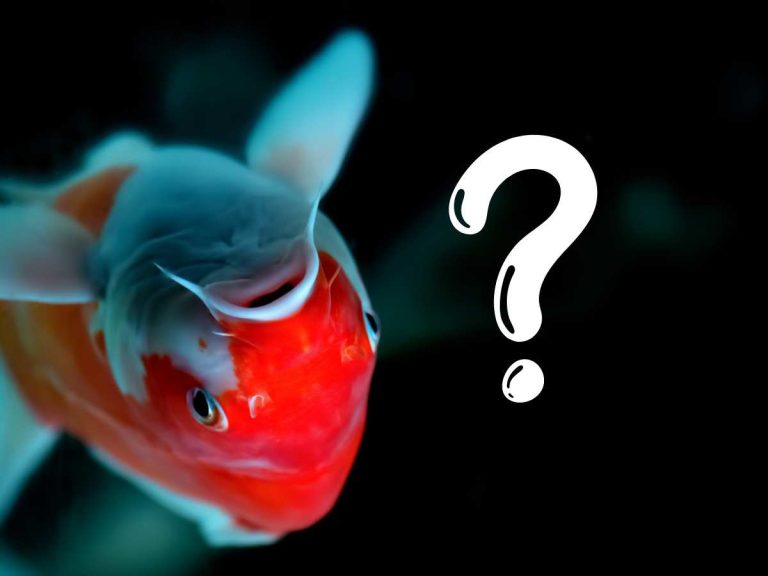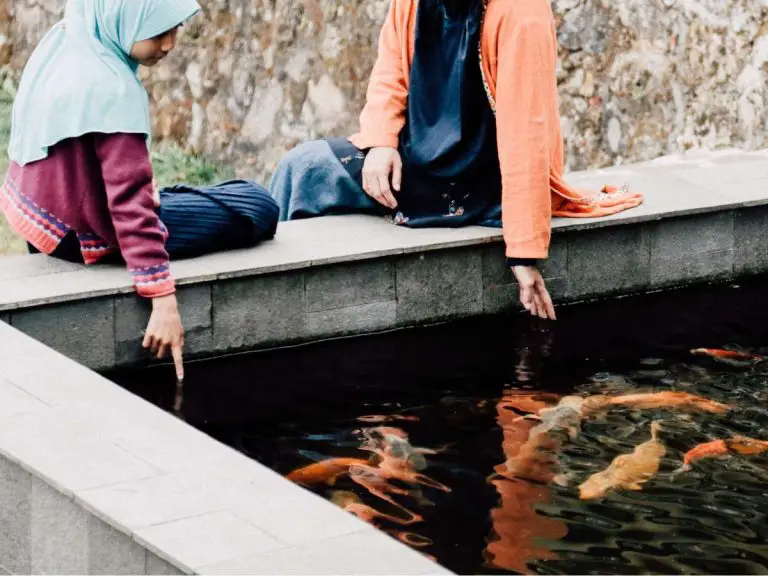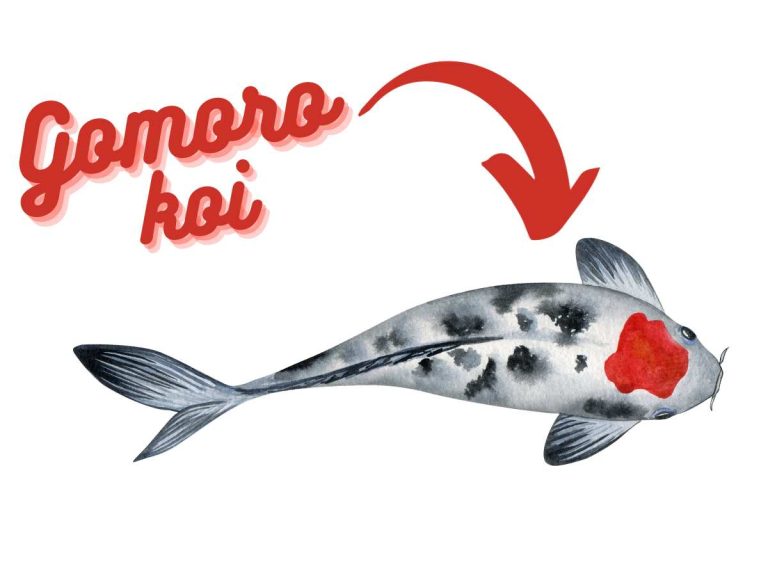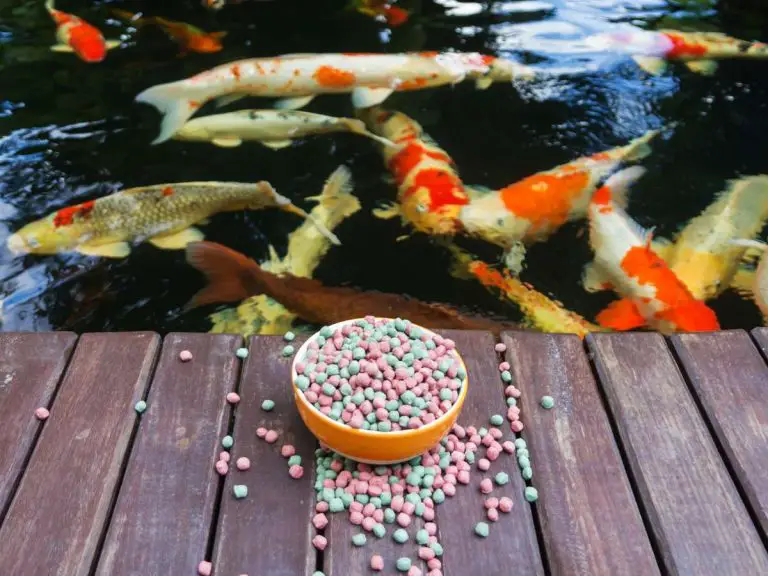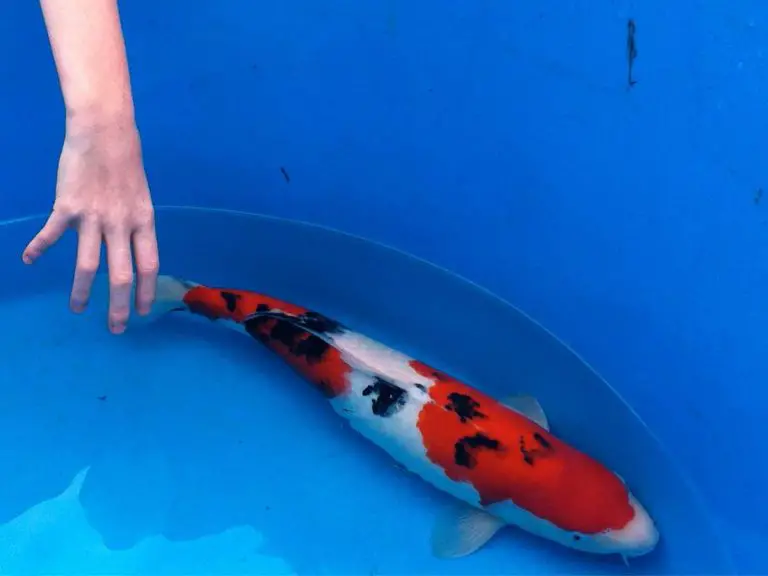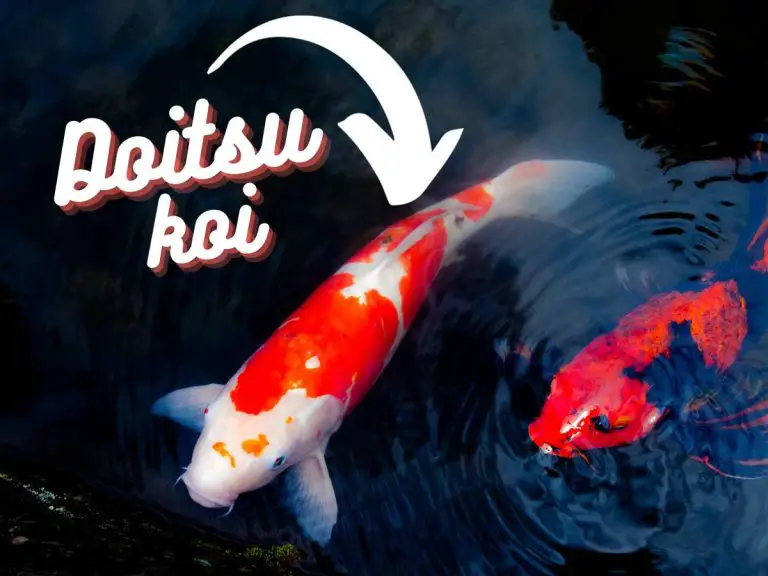Bekko Koi Guide: Expert Tips and Care Advice For Bekko Koi
Bekko Koi, with their vibrant patterns and graceful presence, have long been a symbol of elegance and tranquility in aquatic landscapes. These captivating fish, originating from Japan, are not just a visual delight but also carry a rich history and cultural significance.
As koi enthusiasts around the world can attest, the Bekko Koi’s unique coloration and serene demeanor make them a prized addition to any pond. Whether you’re a seasoned koi keeper or a newcomer to the world of aquatic pets, understanding the characteristics, care requirements, and aesthetic potential of Bekko Koi is essential.
In this comprehensive guide, we’ll cover the distinct features of Bekko koi, along with care tips, breeding insights, and more.
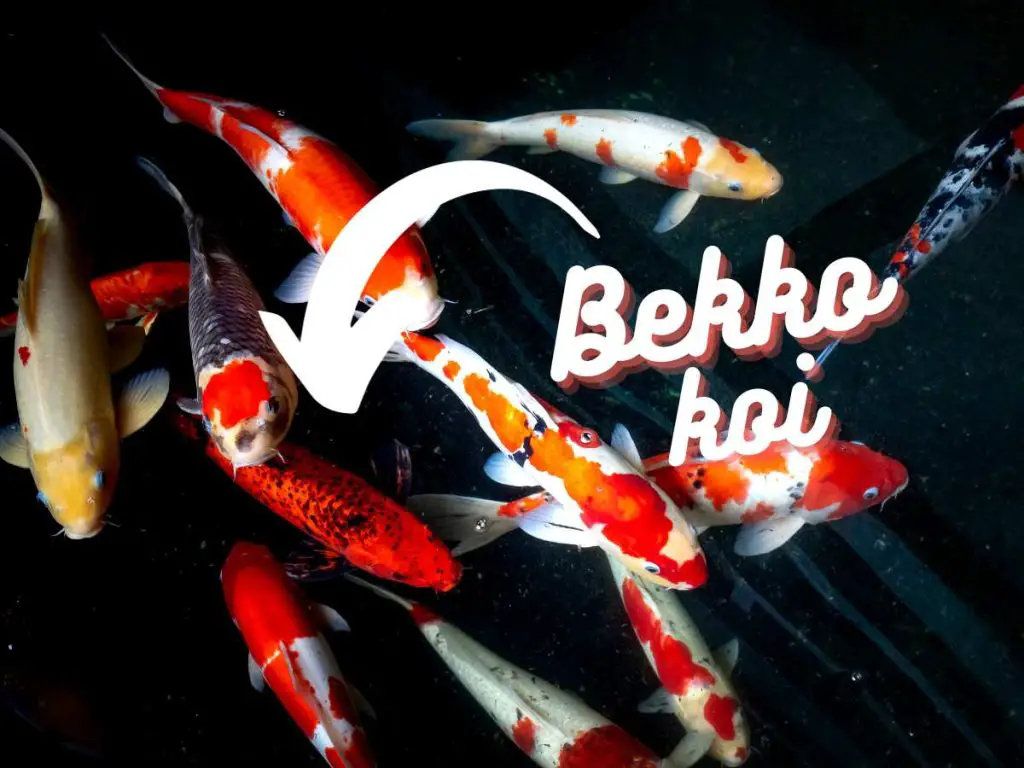
What are Bekko Koi?
Bekko Koi are one of the most unique and popular varieties you’ll find. Their distinct color patterns make them a standout choice for koi enthusiasts looking to add some visual interest to their pond.
Bekko Koi are renowned for their distinctive appearance and serene presence in any pond. Their name, “Bekko,” translates to “tortoiseshell” in Japanese, a fitting description given their unique color patterns.
These fish will have a solid white (Shiro Bekko), red (Aka Bekko), or yellow (Ki Bekko) base color.
And what sets Bekko Koi apart are the black markings, known as “Sumi,” that overlay their base color. These Sumi patterns are ideally well-defined, evenly distributed, and should not appear on their head.
When choosing a Bekko Koi, look for fish with well-balanced Sumi patterns and a strong base color. Avoid fish with Sumi markings on the head or those with faded base colors.
A high-quality Bekko Koi will have clear, bright base colors with lustrous scales. The contrast between the base color and Sumi markings is crucial for their aesthetic appeal.

The History of Bekko Koi
The Bekko Koi is a traditional variety of the Nishikigoi, more commonly known as Koi fish.
The term “Bekko” translates to “tortoiseshell” in Japanese, which aptly describes the fish’s distinct color patterns. Bekko Koi are characterized by a solid white, red, or yellow base color with contrasting black markings scattered across their bodies.
The origins of the Bekko Koi can be traced back to the early 20th century in Japan. While Koi breeding has been a practice in Japan for centuries, the Bekko variety emerged as breeders began to experiment with crossbreeding different Koi types to achieve unique color combinations and patterns. The Bekko’s distinct appearance is believed to have resulted from the crossbreeding of the Sanke and Utsuri varieties.
Over the years, the Bekko Koi has been refined and stabilized by breeders to ensure consistency in its color patterns and markings. There are three primary types of Bekko Koi based on their base colors: Shiro Bekko (white base), Aka Bekko (red base), and Ki Bekko (yellow base). Among these, the Shiro Bekko is the most popular and widely recognized.
The Bekko Koi’s unique tortoiseshell pattern and serene beauty have made it a favorite among Koi enthusiasts and collectors worldwide. Its history is a testament to the dedication and passion of Koi breeders in their pursuit of creating exquisite and distinct varieties of this beloved ornamental fish.
Bekko Koi Care Tips
When taking care of your Bekko Koi, there are a few important factors to consider. Proper pond setup and environment, feeding and nutrition, and maintaining the right water temperature are all crucial for the health and well-being of your beautiful fish.
Pond setup and environment
First and foremost, you need to ensure that your pond provides the ideal conditions for your Bekko Koi to thrive. The size and depth of the pond should be suitable for their growth and comfort, allowing enough space for them to swim freely. A larger pond is generally better, as it provides better water circulation and allows for a more stable ecosystem.
In terms of water quality, investing in a good filtration system is essential. This will help keep the water clean and clear of any harmful substances that could harm your fish. It’s also a good idea to incorporate pond vegetation and shading options to help maintain the right balance of light and shade in the pond.
Feeding and nutrition
Feeding your Bekko Koi a balanced diet is crucial for their overall health. They require a combination of high-quality koi pellets that are rich in protein, vitamins, and minerals. Look for options specifically formulated for koi fish to ensure they get all the necessary nutrients they need.
In terms of feeding frequency, it’s generally recommended to feed your Bekko Koi 2-3 times a day, but be careful not to overfeed them. Overfeeding can lead to poor water quality and potential health issues for your fish. Monitor their appetite and adjust the portion sizes accordingly.
While koi pellets should make up the majority of their diet, you can also supplement their meals with treats like freeze-dried or frozen insects, fruits, and vegetables. You can even try out recipes for homemade koi food. Just be cautious when introducing new foods and ensure they are safe and suitable for koi consumption.
Water temperature and seasonal considerations
Koi fish are sensitive to water temperature, so it’s important to monitor and maintain the right temperature range for your Bekko Koi. Generally, they thrive in water temperatures between 70°F to 80°F (21°C to 27°C). Investing in a pond heater or chiller can help regulate the temperature during extreme weather conditions.
During winter, when the water temperature drops below 50°F (10°C), it’s crucial to take extra care of your Bekko Koi. Consider providing a heated shelter or moving them to an indoor pond if necessary.
In hot summers, you can keep your koi cool by providing shade and increasing aeration in the pond.
Feeding Habits of Bekko Koi
Feeding time with Bekko Koi is always an exciting event, as these fish have some interesting behaviors that make the experience even more enjoyable. Let’s take a closer look at their feeding habits and discover how to keep them happy and healthy.
Behaviors during feeding time
Bekko Koi are known for their vigorous and enthusiastic feeding habits. As soon as you approach the pond or drop the food in, they will swim towards you in anticipation of their next delicious meal. You might notice them splashing, jumping, or even competing with each other for the food. This lively display adds a touch of excitement to feeding sessions and enhances your overall enjoyment as a pond owner.
Methods for feeding Bekko Koi
Feeding your Bekko Koi can be done using a variety of methods, depending on your preferences and the size of your pond. The most common method is simply scattering the food across the water’s surface, allowing the fish to swim and feed freely. This method mimics their natural feeding behavior and promotes healthy competition among the fish.
Or, if you prefer a more interactive feeding experience, you can train your Bekko Koi to eat directly from your hand!
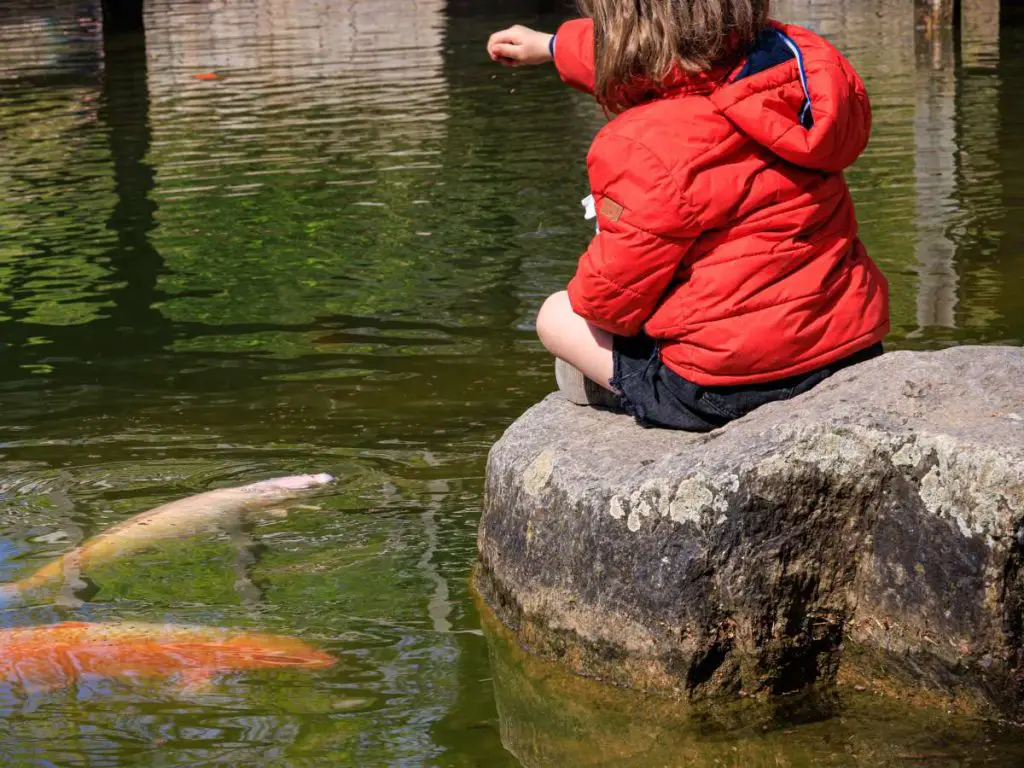
Start by holding a small amount of food in your hand near the water’s surface, allowing the fish to approach and nibble at it. With patience and consistency, your Koi will quickly learn to associate your hand with mealtime, creating a bond between you and your fish.
Feeding strategies for optimal health and growth
To ensure the optimal health and growth of your Bekko Koi, it’s important to follow some feeding strategies. Firstly, avoid overfeeding your fish, as this can lead to health issues and water quality problems. As a general rule of thumb, feed them the amount they can consume within 5 minutes and remove any uneaten food afterward.
Secondly, balance their diet by providing a variety of high-quality koi pellets or flakes that are specifically formulated for their nutritional needs. These foods usually contain a good balance of essential vitamins, minerals, and proteins to support their growth and overall well-being.
Lastly, consider incorporating supplemental treats like freeze-dried worms or shrimp to add variety to their diet. It’s important to remember that treats should only make up a small portion of their overall diet and should not replace their staple food sources.
In conclusion, Bekko Koi’s feeding habits are not only fascinating to watch but also play a crucial role in ensuring their health and happiness. By understanding their behaviors, using appropriate feeding methods, and following the right strategies, you can provide your Bekko Koi with a nutritious diet that will keep them thriving for years to come.
Breeding Bekko Koi
| Stage | Key Points |
|---|---|
| Spawning | – Use spawning ropes or aquatic plants for egg attachment. |
| – Remove adults post-spawning to prevent egg consumption. | |
| Rearing Fry | – Maintain clean water and consistent temperature. |
| – Feed specialized koi fry food or crushed pellets multiple times a day. | |
| Juvenile Development | – Transition to larger pellets as they grow. |
| – Regular water changes and disease monitoring are essential. |
Breeding Bekko Koi can be an exciting and rewarding experience for koi enthusiasts. By understanding the breeding process and following some essential techniques, you can successfully breed and raise healthy fry to create a new generation of Bekko Koi in your pond.
Breeding koi is a complex but fascinating endeavor. It involves selecting suitable breeding candidates based on their physical characteristics, such as body shape, coloration, and pattern.
Remember: Bekko Koi are known for their striking color patterns, so it’s important to choose parent fish with desirable patterns to produce offspring with similar traits.
Selecting breeding candidates
When selecting breeding candidates, look for mature Bekko Koi that exhibit vibrant, clear, and well-defined color patterns. Avoid fish with faded or blurry patterns, as these may produce less visually appealing offspring. It’s also crucial to ensure both male and female koi are healthy and free from any diseases or parasites.
It’s recommended to isolate the chosen breeding pair in a separate pond or tank to facilitate controlled breeding. This not only prevents unwanted crossbreeding but also provides a stress-free environment for the breeding process.
Spawning process and techniques
Bekko Koi typically spawn during the springtime when water temperatures reach around 68°F to 75°F (20°C to 24°C). To induce spawning, gradually increase the water temperature over a few weeks.
Once the water temperature is conducive to spawning, you may notice the male koi chasing the female aggressively. This behavior indicates that they are ready for reproduction.
Koi are egg scatterers, so it’s important to provide suitable spawning media, such as spawning ropes or plants, for the eggs to attach to. This prevents other fish from eating the eggs and ensures a higher chance of successful fertilization.
After spawning, remove the adult koi from the breeding tank, as they may eat the eggs or stress the fry. Place them back in their main pond or tank once the spawning process is complete.
Rearing fry and juvenile stages
Once the eggs hatch, you’ll have a batch of tiny fry. To ensure their survival and healthy growth, it’s crucial to provide them with a suitable environment. This includes maintaining clean water conditions and consistent temperature levels.
To improve their chances of survival, feed the fry with specialized koi fry food or finely crushed pellets. It’s important to feed them small amounts several times a day to meet their nutritional needs.
As the fry develop into juveniles, you can gradually transition them to larger pellets appropriate for their size. Regular water changes and monitoring for any signs of disease are vital for their overall well-being.
Breeding koi, including Bekko Koi, requires patience and careful attention. However, the joy of witnessing the growth and development of your koi fry into mature fish is truly rewarding. By following these breeding techniques, you can contribute to preserving and enhancing the diversity of Bekko Koi colors and patterns in your pond.
Common Health Issues in Bekko Koi
Bekko Koi may be hardy, but just like any living creature, they can experience health issues. It’s essential to keep an eye out for any signs of illness, as early intervention can make a significant difference in their overall well-being and longevity.
Spotting potential health problems in your Bekko Koi is crucial to maintaining their health. Watch out for any changes in behavior, such as sluggishness or loss of appetite. Keep an eye on their physical appearance too – any abnormalities like visible sores, lesions, or discoloration could be indicators of underlying health issues.
Parasites and diseases are unfortunate realities that can affect Bekko Koi. Common diseases include koi herpesvirus, bacterial infections, and parasitic infestations like ich or flukes. The best defense is prevention, ensuring proper water quality and regular health checks.
However, if your fish do fall ill, swift and accurate diagnosis from a veterinarian specializing in aquatic animals is essential.
Prevention and treatment options
Prevention is always better than cure! Maintain excellent water quality by regularly testing pH levels, ammonia, nitrite, and nitrate levels. Avoid overcrowding in the pond, as this can increase stress and weaken the immune system of your koi. Quarantine new arrivals to prevent introducing potential diseases to your existing fish population.
If you notice signs of illness, immediate action is necessary. Some common treatment methods include salt baths to combat external parasites and using medications specific to the type of infection or disease present. Always follow the instructions provided by professionals or aquatic specialists when administering treatments.
Importance of regular health checks
Regular health checks by a qualified aquatic veterinarian are highly recommended for the well-being of your Bekko Koi. These professionals have the expertise to identify any signs of illness, provide accurate diagnoses, and recommend appropriate treatments. Routine health checks can help catch problems early on before they become more severe and difficult to treat.
Enhancing Koi Pond Aesthetics with Bekko Koi
When it comes to enhancing the aesthetics of your koi pond, incorporating Bekko Koi is an excellent choice. These beautiful fish with their unique color patterns can truly transform your pond into a mesmerizing display of nature’s art.
Here are some design considerations, mixing tips, landscaping ideas, and maintenance guidelines to help you create a stunning koi pond with Bekko Koi.
Design Considerations for Incorporating Bekko Koi
There are a few key considerations to keep in mind when designing a koi pond. First, consider the size and depth of your pond. Bekko Koi tend to grow to about 24 inches in length, so ensure that your pond is spacious enough to accommodate their growth while providing them with ample swimming space.
Second, think about the color contrast and placement of your Bekko Koi. Since these fish have a striking single-color pattern on their bodies, it’s essential to choose other plants and elements that will highlight their beauty. Consider incorporating plants with contrasting hues, such as luscious green foliage or vibrant water lilies, to create a visually captivating environment.
Mixing Bekko Koi with Other Koi Varieties
If you’re feeling adventurous, you can mix Bekko Koi with other koi varieties to add more diversity and visual interest to your pond. The contrasting colors and patterns of different koi breeds can create quite a spectacle. Imagine the dynamic combination of the Bekko’s solid base color with Showa’s black and red markings, or the Kohaku’s simple white and red elegance, or any of the Doitsu’s stunning varieties.
However, keep in mind that not all fish get along harmoniously. Some breeds might be more territorial or aggressive than others. It’s crucial to research and select koi varieties that are known to coexist peacefully to maintain a tranquil and balanced pond environment.
Landscaping Ideas and Aesthetic Tips
Beyond the fish themselves, your pond’s landscaping plays a significant role in creating a visually stunning environment. Consider incorporating elements such as rocks, bonsai trees, or Japanese-inspired lanterns to add a touch of serenity and cultural charm to your pond.
Adding aquatic plants such as water lilies, water hyacinths, or submerged grasses not only provides additional natural beauty but also improves the ecosystem by providing oxygen and filtration. These plants offer shade and hiding spots for your Bekko Koi while adding texture and depth to your pond’s design.
Maintenance and Cleaning Guidelines
Maintaining a clean and healthy pond is essential for the overall well-being of your Bekko Koi. Regular maintenance tasks such as cleaning filters, removing debris, and monitoring water quality are necessary to keep your koi healthy and thriving.
Additionally, prune any overgrown vegetation that may restrict movement or block sunlight penetration. Balance is key when it comes to maintaining your pond’s ecosystem, so keep an eye on the plant growth to ensure it doesn’t outcompete or overcrowd the pond’s inhabitants.
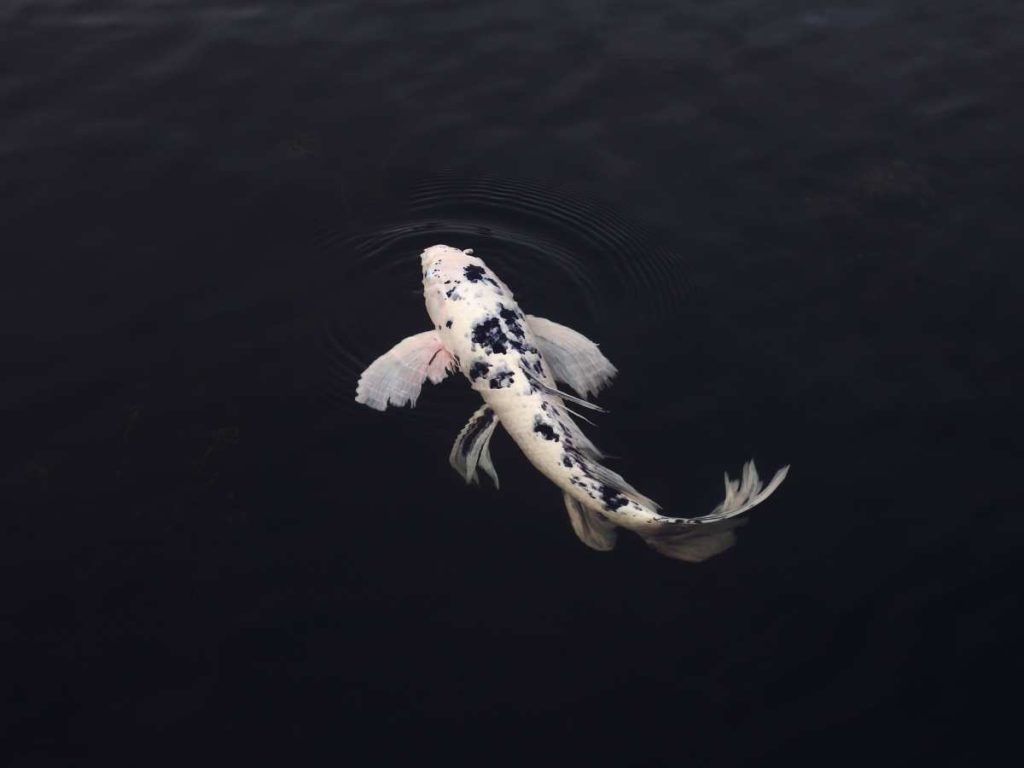
Overview: Health and Maintenance of Bekko Koi
| Aspect | Key Points |
|---|---|
| Common Health Issues | – Watch for behavioral changes like sluggishness or appetite loss. |
| – Visible sores, lesions, or discolorations can indicate health problems. | |
| – Diseases include koi herpesvirus, bacterial infections, and parasites like ich or flukes. | |
| Prevention & Treatment | – Regularly test water quality (pH, ammonia, nitrite, nitrate). |
| – Quarantine new fish. | |
| – Use treatments like salt baths or specific medications for infections. | |
| Regular Health Checks | – Have Bekko Koi checked by an aquatic veterinarian regularly. |
| Pond Aesthetics | – Consider pond size and depth. |
| – Incorporate contrasting plants and elements for visual appeal. | |
| – Mix with other koi varieties for diversity but ensure peaceful coexistence. | |
| Maintenance | – Clean filters, remove debris, and monitor water quality. |
| – Prune overgrown vegetation and balance plant growth. |
Final Thoughts
Caring for Bekko Koi entails providing them with the ideal pond setup and environment. Your pond should be large enough to accommodate the fish comfortably and deep enough to provide ample swimming space. Proper filtration systems are crucial for maintaining water quality, while vegetation and shading options can help provide protection from direct sunlight. By ensuring a suitable environment, you can create a healthy and thriving habitat for your Bekko Koi.
Let’s quickly recap the main points:
- Bekko Koi are a popular variety known for their unique color patterns.
- They can grow to impressive sizes and live for many years.
- To care for Bekko Koi, make sure your pond is the right size and depth and maintain water quality with a good filtration system.
- Feed them a balanced diet and provide treats occasionally.
- Monitor water temperature and adjust accordingly, especially during winter and extreme weather conditions.
- If you’re interested in breeding Bekko Koi, learn the process of selecting breeding candidates and rearing fry.
- Keep an eye out for common health issues and seek treatment when needed.
- To enhance your koi pond aesthetics with Bekko Koi, consider their design, mixing them with other varieties, and maintaining a clean and well-landscaped environment.
The Bekko Koi stands as a symbol of the artistry and dedication inherent in Koi breeding. Its distinctive tortoiseshell pattern, born from the meticulous efforts of early 20th-century Japanese breeders, showcases the endless possibilities within the realm of Koi genetics. As enthusiasts and collectors continue to admire and cherish the Bekko Koi, its legacy serves as a reminder of the rich history and cultural significance of Nishikigoi. This variety, with its serene beauty and unique markings, will undoubtedly remain a treasured gem in the world of ornamental fish for generations to come.
Related Questions
How often should I clean my Bekko Koi pond?
It is recommended to perform regular maintenance on your Bekko Koi pond to ensure optimal water quality. This includes cleaning the pond every 2-3 weeks, removing debris, and regularly checking and adjusting the filtration system. However, the frequency of cleaning may vary depending on the size of your pond, the number of fish, and the surrounding environment. Monitoring the water parameters and visual appearance of the pond will help determine when cleaning is necessary.
Can Bekko Koi be kept with other types of koi fish?
Yes, Bekko Koi can be kept with other koi fish varieties. However, it is important to consider their compatibility in terms of size, temperament, and water requirements. When introducing Bekko Koi to an existing koi fish community or mixing different koi varieties, it is essential to monitor their interactions closely. Providing ample space, hiding spots, and ensuring balanced feeding will promote peaceful coexistence among different koi varieties in your pond.

